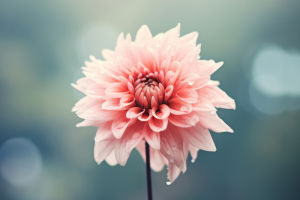The formation of reefs is the result of the long-term accumulation and deposition of calcium material from reef-building corals and other reef-building organisms.
These organisms generate reefs, which are a type of reef made up of calcareous remains of reef-building corals and calcareous algae. There are three types of coral reefs in the modern ocean: reefs, barrier reefs, and atolls.
Reefs grow on the continental coast and the margins around the island. The width of the distribution ranges from ten meters to a hundred meters. The distribution range and morphology, as well as the coastal underwater topographic features and water depth conditions, are closely related.
During the early stages of shore reef stony coral growth and development, the general scale is small, but they are distributed more widely. China's Hainan Island has scattered coral shore reef distributions.
The reef grows offshore and far away from the shore, and it is like a castle around the land. Therefore, it is called the reef. The barrier reef is separated from the land by a width of several kilometers to dozens of kilometers of water.
This water is surrounded by coral reefs, so it is called a lagoon. The depth of the lagoon is usually tens of meters, up to hundreds of meters, and the width of the barrier reef itself varies from a few hundred meters to several kilometers. However, it is completely continuous, with gaps in some places, which allow the lagoon to be connected to the outer sea.
There are sometimes reefs inside the lagoon, and ships sailing in the lagoon should be especially careful to avoid touching the reef and sinking.
The world's largest barrier reef is in the northwestern part of the Coral Sea, often referred to as the Great Barrier Reef off the east coast of Australia. It stretches from the northeast coast of Australia to the south, intermittently up to 2010 kilometers long, and the distance from the Australian mainland is 16-240 kilometers.
The underwater scenery of the Great Barrier Reef is so beautiful that international organizations have named it one of the seven wonders of the world's waters. Australia has designated it as a national marine park and marine nature reserve, attracting many tourists from around the world each year.
The atoll is similar to the barrier reef in its distribution pattern, but instead of growing around land or in the ocean close to land, it is generally a system of coral island reefs forming a cluster in the ocean.
A fully developed atoll consists of a surrounding reef ring, a diving lagoon in the middle, and several coral islands in the lagoon. Reefs that are distributed like a ring vary from a few kilometers to tens of kilometers in diameter around the perimeter.
If you look down from an airplane at high altitude, it looks like a bouquet of garlands thrown on the blue sea and like a string of alabaster pearl necklaces scattered on the surface of the sea, gorgeous and colorful. Due to the shallow water where the reef grows, the waves spread to this place will produce broken waves. The view from above forms silvery-white circles.
Today's reefs are major centers of diversity, with complex ecosystems where animals like coral polyps build reefs to defend against predators and competitors. We find that animals were building reefs long before the evolution of complex life, suggesting that they must have faced selection pressures for survival at the time.
Reefs are not only beautiful natural wonders but also play an essential role in our planet's ecosystem. They act as a barrier to protect coastlines from storms and erosion, provide habitats for numerous marine species, and support fisheries that feed millions of people worldwide.
They are also vital in the ocean's carbon and nitrogen cycles and help to reduce the impact of ocean acidification caused by carbon dioxide emissions.


